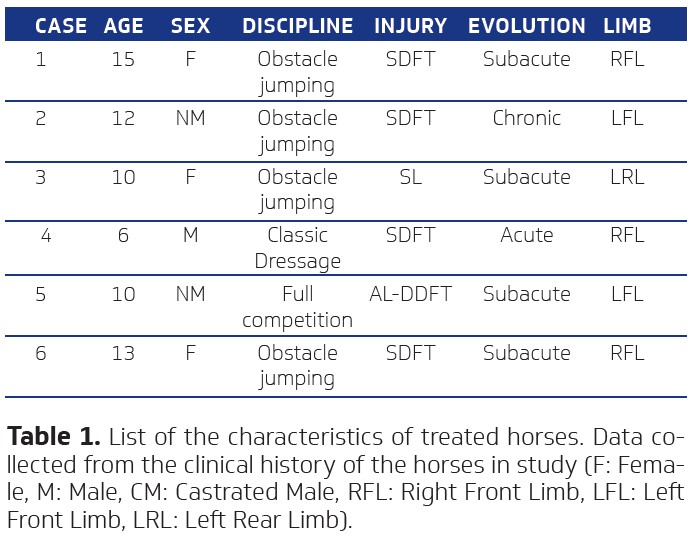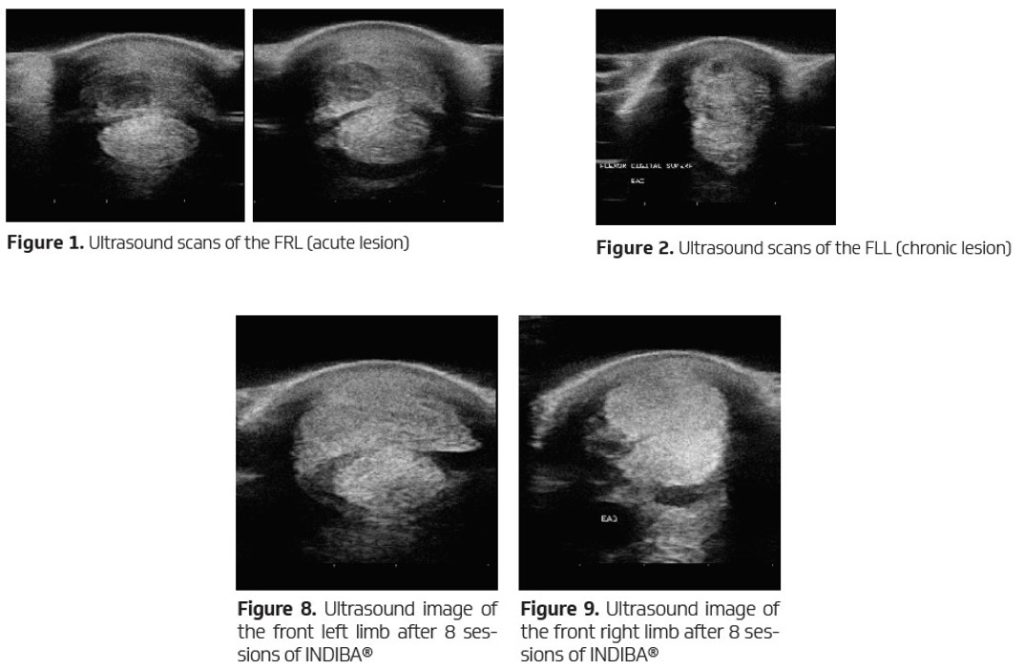Tendon and ligament injuries in horses: Case compilation
Published:25 November,2020
Tendon and ligament injuries in athletes, both humans and animals, are some of the most feared in the sports world due to the long recovery time they require. And this is simply due to the characteristics of the tissue: very fibrous and not very vascularized.
The use of tools that increase the blood supply to the tissue and stimulate its correct healing is essential to accelerate the recovery time and, in addition, reduce the probability of re-injure. INDIBA Animal Health is the modality that allows you to achieve both objectives in a single treatment, whether in a recent (acute) or an old (chronic) injury. The results have been evidenced in numerous cases. Here, we have compiled the most relevant.
Diathermy using capacitive and resistive electrical transfer for the treatment of tendon and ligament injuries in sport horses: personal experiences
Romanò L, Zani Dd, Tassan S. Ippologia.
This study is the first carried out with our VET905 device in horses and the one that gave rise to continue with the study in this species and subsequent commercialization of our equipment in the equine veterinary sector.
In their report, Romanò et al, applied the treatment to 115 sport horses that presented traumatic injuries to tendons, ligaments and synovial sheaths, with lameness lasting less than 30 days (grades 1 and 2 on a scale of 5). Between 5 and 10 sessions were carried out with intervals of 2 or 3 days of rest between them, accompanying the treatments with protocols of controlled rehabilitation exercises. The results of this study reveal that this technique, combined with rest and controlled exercise, has a real effect in reducing recovery time, possibly because the treatment accelerates the drainage of interstitial hematomas and inflammatory exudates.
Look for this clinical report here
Use of monopolar capacitive/resistive radiofrequency at 448 kHz in the treatment of a chronic injury of the suspensory ligament of the fetlock
Campos, M.J., Agüera E.I., Requena F.
One of the most frustrating ligament injuries is to the branches of the suspensory ligament of the fetlock. They are injuries difficult to recover and often have a high rate of re-injury.
In this case reported by Campos, et. al., the 12-year-old patient, Pure Blood Lusitano (PSL), presented with an injury of the lateral branch of the fetlock suspensor ligament. The horse had a grade 4 out of 5 lameness, inflammation of the right posterior fetlock and a lameness for more than 3 months.

The treatment plan included INDIBA sessions (8 sessions at 3-day intervals between each session), therapeutic shoeing, PRP injections and controlled rehabilitation exercises. At the end of the treatment, an improvement in the quality of the FSL fibers was evidenced, with the disappearance of the anechoic and hypo-echogenic areas and also a decrease in inflammation and edema around the affected ligament. Additionally, a neoformation of collagen fibers was achieved, with correct alignment and organization of the fibers.
This case shows us that with the use of INDIBA in cases of desmitis it is not only possible to control and accelerate the evolution of the lesion, but also that the quality of the new tissue is much better.
Look for this clinical report here
448 kHz radiofrequency in the treatment of tendon and ligament injuries in horses
David Argüelles, Marta Prades, Aritz Saitua, Ana Muñoz, Antonia Sánchez De Medina, Lorenzo Pozo, Toni Ramon.
Another interesting clinical report is this one carried out jointly by the University of Córdoba, the Center for Equine Sports Medicine and the Autonomous University of Barcelona, in which different cases of tendinopathies and desmitis were collected, with different degrees of severity and evolution, to evaluate the effects in the different scenarios.

In this study, all horses that were treated with resistive capacitive monopolar radiofrequency at 448 kHz, returned to their previous competitive level after 5-6 months of treatment, which varied depending on the extent of the lesion and the duration of treatment. In addition, in the period in which they have continued to compete and have been followed up by telephone with veterinarians, trainers and owners (3 months) there has been no recurrence in any of the cases.
Look for this clinical report here
Monopolar capacitive/ resistive radiofrequency at 448 kHz in the treatment of disorders of the superficial flexor tendon in horses. Clinical case
Campos, M.J., Agüera E.I., Requena F.
Finally, we leave you with this very interesting case in which INDIBA is combined with one of the most popular therapies in the treatment of injuries in horses: Platelet Rich Plasma (PRP). The possibilities of combination with regenerative therapies are very frequent questions and here one of many cases in which it has been used. Another interesting point of this particular case is that the effects of the INDIBA treatment can be evidenced in both an acute and a chronic injury in the same horse.

With the treatment, a notable anti-inflammatory effect was verified, visible to the naked eye, from the first session. The effect was more accentuated from the third application and until the resolution of the treatment. In the post-treatment ultrasound control (one month and a half after the baseline ultrasound and the first session), regeneration of the broken tendon fibers was verified. These are displayed in a more organized and consistent way.
Look for this clinical report here
Do you want to try INDIBA in your own practice?
Get in touch with a Product expert.